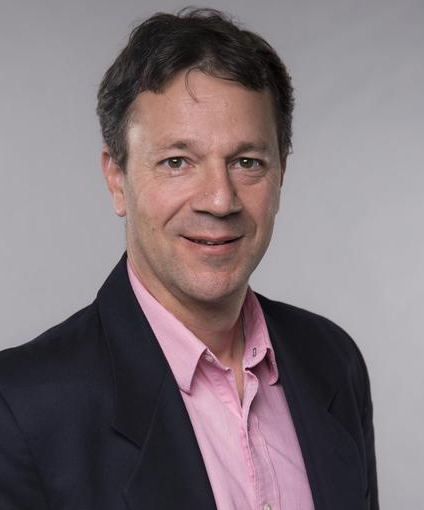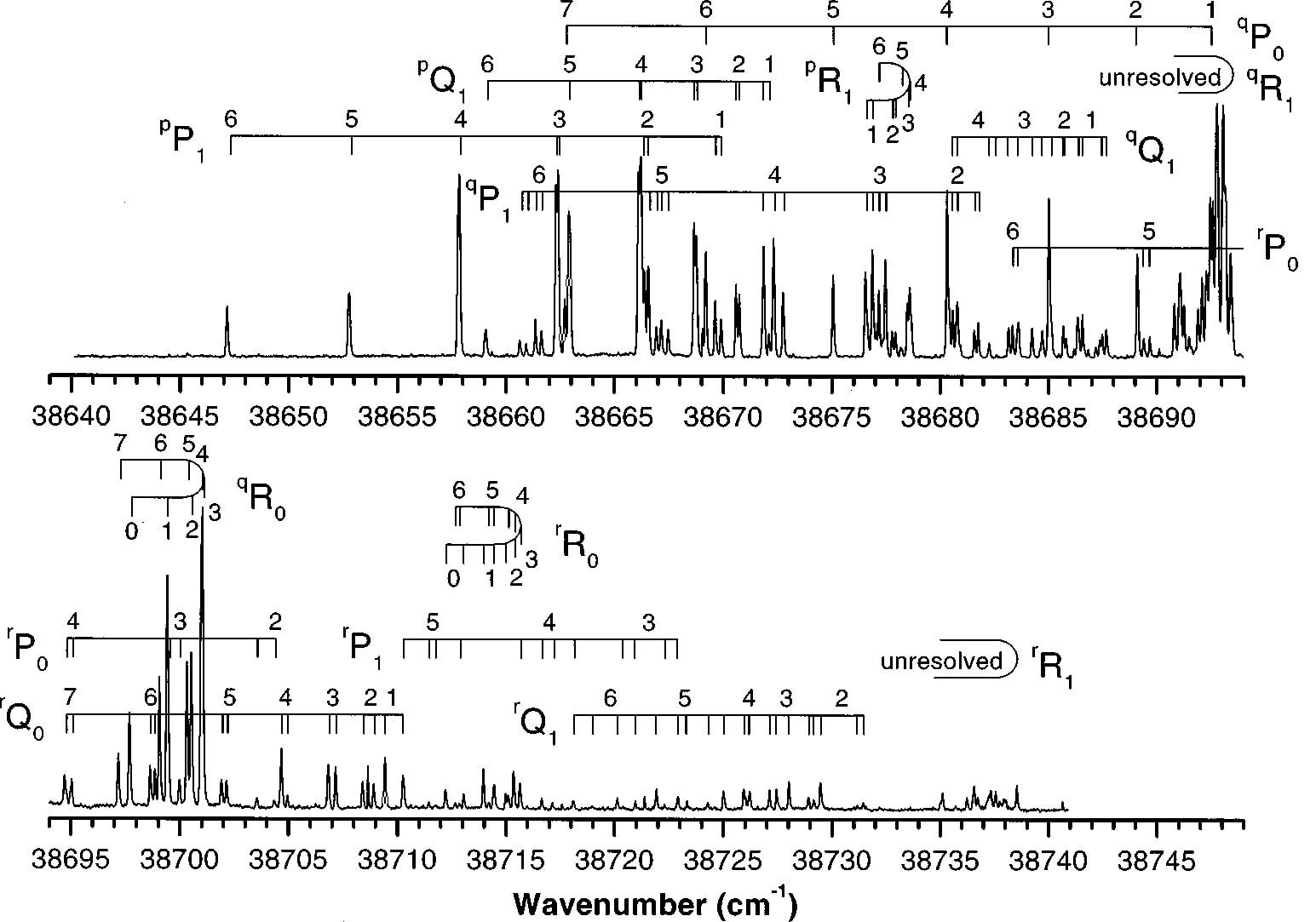
Education and Employment History
Associate Professor, Florida Atlantic University, Department of Chemistry and Biochemistry, Boca Raton, FL, 2010 – present
Assistant Professor, Florida Atlantic University, Department of Chemistry and Biochemistry, Boca Raton, FL, 2004 – 2010
Research Associate, Department of Chemistry, University of Arizona, Tucson, AZ, 2001-2003 (Biophysics research with Prof. George Atkinson)
Research Associate, Biochemistry Group, Heart Research Institute, Sydney, Australia, 1997-2001 (Biochemistry research with Prof. Roland Stocker)
Doctor of Philosophy, Physical Chemistry, University of Sydney, 1997 (Thesis Advisor: Prof. Scott H. Kable)
Bachelor of Science (Honors), Physical Chemistry, University of Sydney, 1992 (Thesis Advisor: Prof. John C. Mackie)
My Ph.D. research involved the study of photodissociation reactions of aldehydes, particularly those leading to formyl radical production. The reactions in the gas phase were initiated with UV laser pulses while the formyl radical fragments were detected with laser induced fluorescence spectroscopy. This research tested fundamental principles of how energy is absorbed by molecules and redistributed among the degrees of freedom of the photo-fragments. The product energy distributions were well modeled using statistical theories in the case of the larger molecules (ethanal and propanal) but not in the case of formaldehyde. Quantum effects relating to angular momentum conservation were revealed by my results that led to the subsequent development of the “roaming” mechanism for photodissociation.

AC Terentis, M Stone, SH Kable (1994). Dynamics of acetaldehyde dissociation at 308 nm: rotational (N, Ka) and translational distributions of the HCO photoproduct, Journal of Physical Chemistry, 98, 10802-10808.
AC Terentis, PT Knepp, SH Kable (1995). Nascent state distribution of the HCO photoproduct arising from the 309 nm photolysis of propionaldehyde, Journal of Physical Chemistry, 99, 12704-12710.
AC Terentis, SH Kable (1996). Near-threshold dynamics and dissociation energy of the reaction H2CO to HCO + H, Chemical Physics Letters, 258, 626-632.
AC Terentis, SE Waugh, GF Metha, SH Kable (1998). HCO (N, Ka, Kc, J) distributions from near-threshold photolysis of H2CO (J, Ka, Kc), Journal of Chemical Physics, 108, 3187-3198.
As a postdoctoral scientist at the Heart Research Institute in Sydney I made contributions to two main areas of research relating to heart disease. In the first, I studied vitamin E’s potential role in preventing oxidation of low density lipoprotein (LDL) lipids in vivo. I analyzed vitamin E and lipid oxidation products in human post-mortem aortic and carotid endarterectomy samples to show that LDL oxidation and lesion development was not prevented by vitamin E in vivo, thus challenging the idea that vitamin E may be beneficial for the prevention of atherosclerosis. For the other project, I completed the first resonance Raman (RR) spectroscopic study of Indoleamine 2,3-Dioxygenase (IDO), an important target for the treatment of cancer and other inflammatory and infectious diseases. The RR results provided new insights into the heme active site structure of the human form of the enzyme, which triggered a slew of subsequent biophysical research on IDO.

AC Terentis, SR Thomas, JA Burr, DC Liebler, R Stocker (2002). Vitamin E oxidation in human atherosclerotic lesions, Circulation Research, 90, 333-339. [PMID: 11861423]
JM Upston, AC Terentis, K Morris, JF Keaney, Jr., R Stocker, (2002). Oxidized lipid accumulates in the presence of alpha-tocopherol in atherosclerosis, Biochemical Journal, 363, 753-760. [PMCID: PMC1222528]
AC Terentis, SR Thomas, O Takikawa, TK Littlejohn, RJW Truscott, RS Armstrong, S-R Yeh, R Stocker (2002). The heme environment of recombinant human indoleamine 2,3-dioxygenase – structural properties and substrate-ligand interactions, Journal of Biological Chemistry. 277, 15788-15794. [PMID: 11867636]
As a postdoctoral scientist at the University of Arizona I studied the dynamics of light-activated isomerization of the retinal chromophore of bacteriorhodopsin using picosecond time-resolved coherent anti-Stokes Raman spectroscopy (PTR-CARS). The data revealed that sub-picosecond, torsional motion within the polyene precedes C13=C14 bond isomerization, which is critical for initiating the photoreactivity of bacteriorhodopsin.

AC Terentis, L Ujj, H Abramczyk, GH Atkinson, Primary events in the bacteriorhodopsin photocycle: torsional vibrational dephasing in the first excited electronic state, Chemical Physics, 2005:313(1-3);51-62.
AC Terentis, L Ujj, Y Zhou, GH Atkinson, Picosecond time-resolved coherent anti-Stokes Raman spectroscopy of the artificial bacteriorhodopsin pigment BR6.11, Journal of Physical Chemistry A, 2003:107(49);10787-10797.
Contemporary Chemical Issues, CHM 1025C, undergraduate, Fall 2004
General Chemistry 2, CHM 2046, undergraduate, Summer 2012-2014
Chemistry in Modern Life, CHM 2083, undergraduate, Fall 2005 – 2008; Summer 2004 – 2008
Quantitative Analysis, CHM 3120, undergraduate, Summer 2010, 2018, 2019
Quantitative Analysis Lab, CHM 3120L, undergraduate, Summer 2010, 2018, 2019
Physical Chemistry 1, CHM 3410, undergraduate, Fall 2010 – 2018
Physical Chemistry 1 Lab, CHM 3410L, undergraduate, Fall 2012-2018
Physical Chemistry 2, CHM 3411, undergraduate, Spring 2010 – 2018
Physical Chemistry 2 Lab, CHM 3411L, undergraduate, Spring 2010 – 2019
Bioanalytical Instrumentation Lab, CHM 4139L, undergraduate, Spring 2007, 2008 (co-taught)
Instrumentation, CHM 6157, graduate core course, Fall 2007 – 2009, 2011, 2013, 2015, 2017 (co-taught)
Kinetics and Energetics of Reactions, CHM 6720, graduate core course, Spring 2004-2005 (co-taught), 2006 – 2009
Graduate Seminar, CHM 6935, graduate core course, Fall 2009, Spring 2010